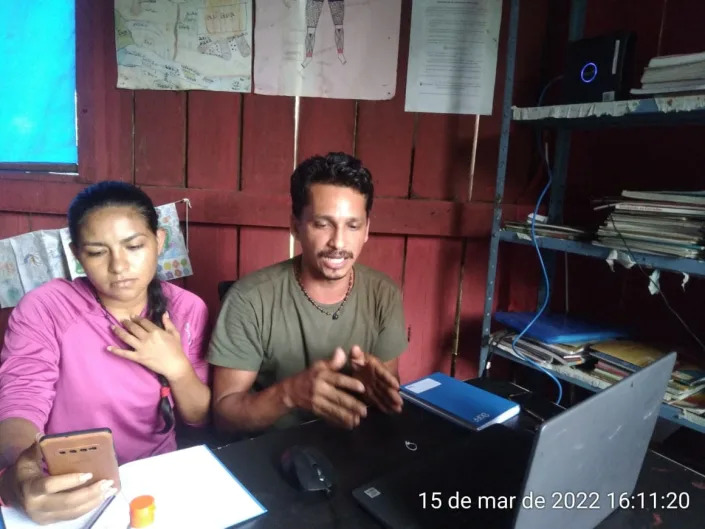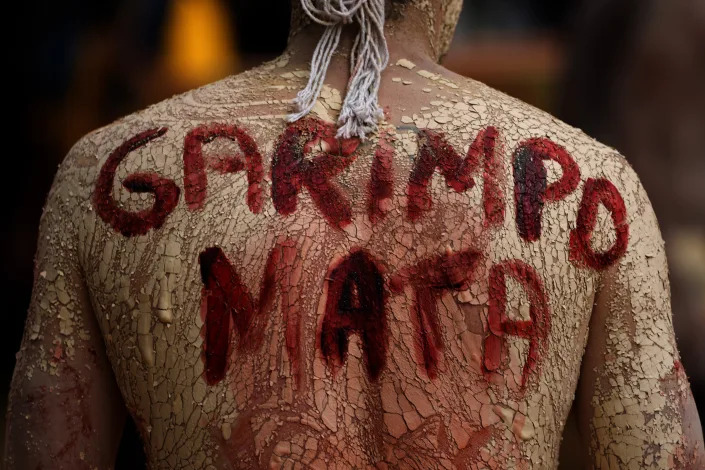CRISPR CRITTERS
New technology offers fighting chance against grapevine killer
Taking aim at the glassy-winged sharpshooter
Peer-Reviewed PublicationIMAGE: GRAPEVINE INFECTED WITH PIERCE'S DISEASE, WHICH IS TRANSMITTED BY THE GLASSY-WINGED SHARPSHOOTER. view more
CREDIT: UNIVERSITY OF CALIFORNIA
Scientists at UC Riverside have a shot at eradicating a deadly threat to vineyards posed by the glassy-winged sharpshooter, just as its resistance to insecticide has been growing.
When the half-inch-long flying insect feeds on grapevines, it transmits bacteria that causes Pierce’s Disease. Once infected, a vine is likely to die within three years — a growing problem for California’s $58 billion wine industry. Currently, it can only be controlled with quarantines and increasingly less effective chemical sprays.
New gene-editing technology represents hope for controlling the sharpshooter. Scientists at UC Riverside demonstrated that this technology can make permanent physical changes in the insect. They also showed these changes were passed down to three or more generations of insects.
A paper describing the team’s work has been published in the journal Scientific Reports.
“Our team established, for the first time, genetic approaches to controlling glassy-winged sharpshooters,” said Peter Atkinson, entomologist and paper co-author.
For this project, the researchers used CRISPR technology to knock out genes controlling the sharpshooters’ eye color. In one experiment, they turned the insects’ eyes white. In another, the eyes turned cinnabar, a blood-red color. Then, the team demonstrated these eye color changes were permanent, passed along to the offspring of the modified parents.
CRISPR is based on the immune systems of bacteria. During attacks by viruses, bacteria save pieces of DNA from their invaders. When the viruses return, the bacteria recognize, cut, and destroy the viral DNA.
Scientists use CRISPR like “molecular scissors” to target specific DNA sequences.
“This is a great technology because it can be so specific to one insect, and not cause off-target effects on other insects, animals or humans,” said Inaiara de Souza Pacheco, UCR entomologist and lead study author. “It’s a much more environmentally friendly strategy for insect control than using chemicals.”
One of the interesting discoveries the team made is that sharpshooter eye color genes are located on non-sexual chromosomes. All animals have two types of chromosomes: sex and autosomal, or non-sexual.
“Knowing that white and cinnabar genes are on autosomal chromosomes demonstrates that the inheritance of these genes is not related to the gender of the insect,” Pacheco said. “This is important for developing control strategies.”
For example, in mosquitoes, it is exclusively the females that transmit viruses to humans. Identifying genes on sex chromosomes that favor female mosquitoes is important for mosquito-control strategies. Conversely, it’s important to know when key genes are not on sex chromosomes.
To demonstrate that CRISPR-made mutations pass through to subsequent generations, the team also had to establish how to get the sharpshooters to mate in pairs. “That’s not always straightforward in entomology, because insects sometimes need more than one other insect to get stimulated for mating,” Atkinson explained.
CAPTION
Glassy-winged sharpshooters with CRISPR-modified eyecolor.
CREDIT
Inaiara de Souza Pacheco/UC
Now that the team has demonstrated that CRISPR can work in these insects, they have a new goal.
“We’re using CRISPR to try and modify the mouth parts of the sharpshooter so they can’t pick up the bacteria that causes Pierce’s Disease,” said Rick Redak, UCR entomologist and paper co-author.
There is high likelihood the team will succeed in modifying the mouths, given the efficiency with which they were able to change the genes for the sharpshooters’ eye color. The team injected the CRISPR molecules into recently laid eggs, and in some experiments as many of 100% of the eggs became nymphs with altered eye color.
“It’s absolutely amazing because the success rate in other organisms is often 30% or lower,” said Linda Walling plant biologist and paper co-author. “The high rate of gene editing success in glassy-winged sharpshooters bodes well for our ability to develop new methods of insect control, as well as understanding the basic biology of this devastating pest.”
Atkinson also marvels how close the team is to its goal of creating insects that aren’t infectious. “Before CRISPR, generating specific mutations with such ease at such high frequencies was virtually impossible,” Atkinson said. “Now we are confident we can come up with ways to create insects unable to transmit this disease.”
“The outcome of this research is an example of the strength that the agriculture departments in UCR’s College of Natural and Agricultural Sciences bring to developing innovative pest control strategies,” he said.
In addition to scientists from UCR’s Department of Entomology, the research team included Walling from the Department of Botany & Plant Sciences and mycologist Jason Stajich from the Department of Microbiology & Plant Pathology.
Their work was funded by the California Department of Food and Agriculture, as well as the U.S. Department of Agriculture’s Animal and Plant Health Inspection Service.
The team is particularly encouraged by the results of their CRISPR experiments on sharpshooters, part of a class of insects for which other molecular control strategies have not previously been effective.
“It’s looking like sharpshooters will become a model organism for the Hemiptera, this big category of piercing, sucking insects,” said Redak. “Our model of using CRISPR for them could blow open our ability to control diseases they transmit to plants and possibly, to humans as well.”
CAPTION
Glassy-winged sharpshooter with cinnabar eye color.
CREDIT
Inaiara de Souza Pacheco/UCR
JOURNAL
Scientific Reports
METHOD OF RESEARCH
Experimental study
ARTICLE TITLE
Efficient CRISPR/Cas9-mediated genome modification of the glassy-winged sharpshooter Homalodisca vitripennis


